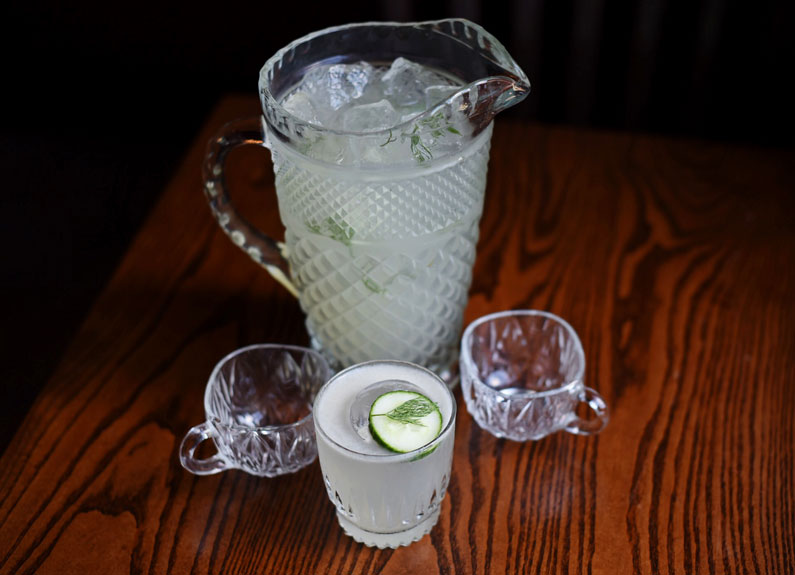
Tapped In: Demystifying Cocktails on Draft
Sponsored Content
As numerous exceptional cocktail programs pop up around town, many bars are searching for ways to stand out and improve efficiency. Enter cocktails on tap: By batching, bartenders are able to deliver complex craft cocktails on the fly with a little behind-the-scenes prep work, allowing bartenders to focus on face time with guests.
Single-serving craft cocktails often take a few minutes or more, but pulling a tap takes only 10 seconds, getting the drink on the table in less than a minute. Plus, patrons are able to sample draft cocktails, curtailing buyer’s remorse.
“If there’s a table waiting, the servers are great about knowing if they want something quick,” said Naomi Roquet, who crafts rotating gimlets on draft at a local bar. “I thought it’d be fun to do something where I can change up the flavor profile when I want.”
Roquet always utilizes Hendrick’s gin and fresh lime juice in her gimlets, which alternate every couple weeks, but beyond that, her creativity flourishes.
“Hendrick’s sells itself when it comes to gin,” she said, adding she tends to choose seasonal accompaniments. “The last one had tarragon simple syrup and a little bit of apple, but I’ve used Aperol, Big O [ginger liqueur] and sometimes another spirit to enhance the flavor. Part of the reason I change the flavor all the time is so they know it’s fresh.”

Although these cocktails require more prep time to start, the increased speed of service makes a considerable difference in customer satisfaction, particularly for restaurants with busy service stations. Additionally, it’s easier to expand the volume of offerings, as pitchers and punch bowls can be incorporated into menus with little effort, perfect for large groups often met with apprehension from busy servers.
“The faster you can get it out, the more you will sell,” said Ted Kilgore, a St. Louis cocktail expert.
“The first week, we sold eight pitchers of In a Pickle.”
Kilgore consistently sells about 500 servings per month of his In a Pickle – which features Hendrick’s gin, elderflower, cucumber and dill, among other ingredients – whereas he only puts out about 150 to 200 servings of other non-draft cocktails per month.
Tap space is limited, so some of the most successful programs have chosen one or two of the most popular cocktails to put on tap, meaning complicated, multi-ingredient drinks that sell well no longer take bartenders away from guests for long periods of time.
Lauren Healey is associate editor at Sauce Magazine.
Tags : Sponsored Content
Most Recent
Olivette Station is serving delicious Pakistani food in an unassuming gas station in West County
You know something’s up. There’s a whisk hanging on a pegboard, and …





